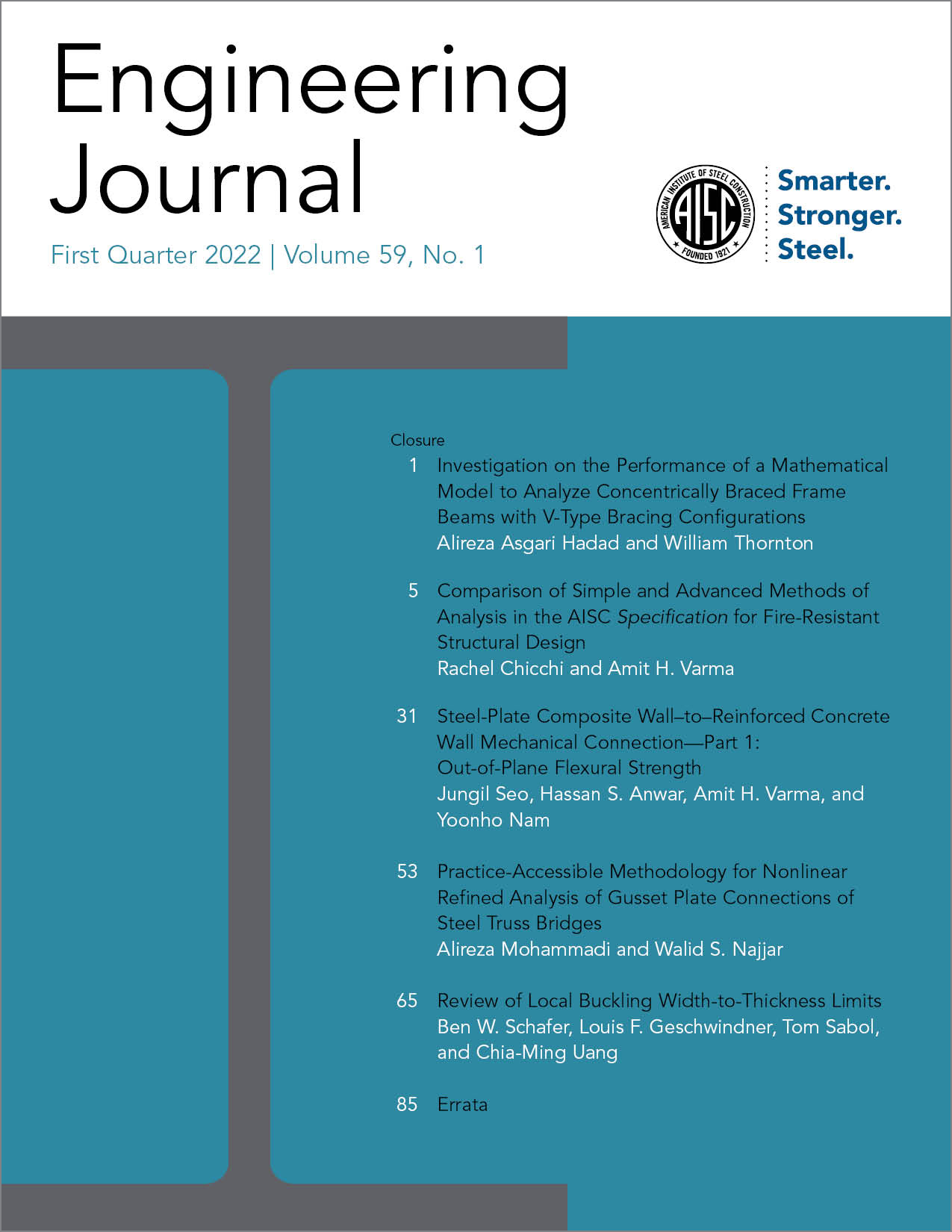Steel-Plate Composite Wall-to-Reinforced Concrete Wall Mechanical Connection-Part 1: Out-of-Plane Flexural Strength
DOI:
https://doi.org/10.62913/engj.v59i1.1214Keywords:
steel-plate composite, reinforced concrete, mechanical connection, full-strength connection design, out-of-plane moment, LS-DYNAAbstract
In safety-related nuclear structures, steel-plate composite (SC) walls are often used in combination with reinforced concrete (RC) walls or foundations. Appropriate connections are required to transfer force demands from the SC walls to the RC components without the connection failure that is often associated with brittle failure mode. This paper presents a design procedure developed for mechanical connections between SC and RC walls. This procedure implements the full-strength connection design approach in ANSI/AISC N690-18, Specification for Safety-Related Steel Structures for Nuclear Facilities, which requires connections to be stronger than the weaker of the connected walls. This paper also presents the results from experimental and analytical investigations conducted to verify the structural performance of the full-strength SC-to-RC connection. The focus of this paper (Part 1) is on the evaluation of the performance, strength, and ductility of SC wall–to–RC wall mechanical connections subjected to out-of-plane flexure. The results include global force-displacement responses, observations on concrete crack propagation, as well as applied force-strain responses of the connection region. The experimentally observed and analytically predicted results verify the conservatism of the proposed design procedure.

